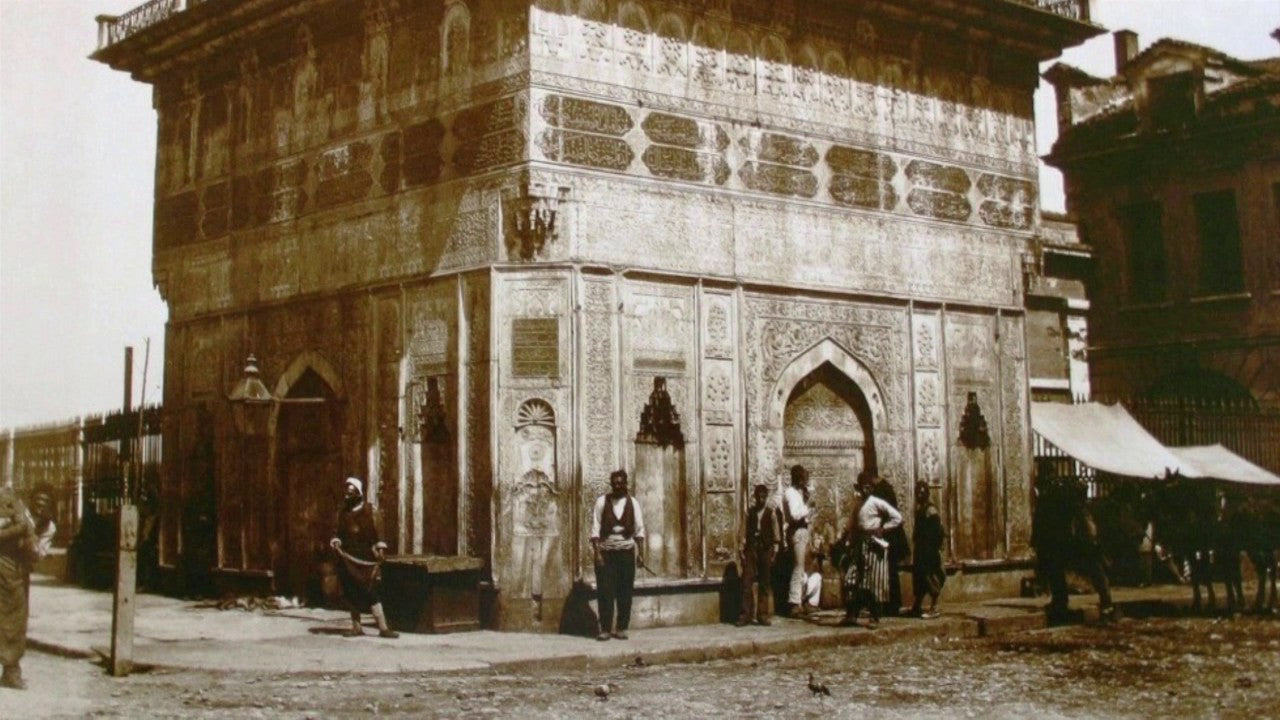
The Tophane Fountain
Located in Tophane Square, north of the Kılıç Ali Paşa Mosque, Tophane Fountain which was built by Sultan I. Mahmut to Architect Mehmet Ağa in 1732, continues to carry the traces of history today as a unique monument with all its elegance.
Most recently restored in 2006 and also known as I. Mahmut Han Fountain, The Tophane Fountain is the third biggest and the highest walled fountain in Istanbul.
Between the years 1700 and 1740 in Ottoman Empire, monumental fountains which have wide eaves were built in the middle of the squares and and a transition period was emerged with the blending of classical style and western style. The Tophane fountain which has four marble faces with the same architectural details, with the effect of the baroque style of eaves under its dome and the pointed arched niches which usually used in the Ottoman classical architecture, is a work of that transition period. The forty-eight-verse long history ode, which surrounds the upper parts of its walls, belongs to opet Nafihi. The Fountain is embellished with rich flowers and fruit motifs according to the aesthetic perception of the time it was built and it becomes almost like a living symbol of the Tulip Period.
The fountains, which have been constructed with such care since the Roman and Byzantine periods, have been reshaped according to the tastes of its era and the changing face of art in Ottoman Empire, and also, have become a sign of economic power, prosperity and political structure of its era. Unfortunately the number of fountains that have remained today is very few, the ones that continue to exist by defying the years, keep beautifying the city with their wonderful architecture.
Most recently restored in 2006 and also known as I. Mahmut Han Fountain, The Tophane Fountain is the third biggest and the highest walled fountain in Istanbul.
Between the years 1700 and 1740 in Ottoman Empire, monumental fountains which have wide eaves were built in the middle of the squares and and a transition period was emerged with the blending of classical style and western style. The Tophane fountain which has four marble faces with the same architectural details, with the effect of the baroque style of eaves under its dome and the pointed arched niches which usually used in the Ottoman classical architecture, is a work of that transition period. The forty-eight-verse long history ode, which surrounds the upper parts of its walls, belongs to opet Nafihi. The Fountain is embellished with rich flowers and fruit motifs according to the aesthetic perception of the time it was built and it becomes almost like a living symbol of the Tulip Period.
The fountains, which have been constructed with such care since the Roman and Byzantine periods, have been reshaped according to the tastes of its era and the changing face of art in Ottoman Empire, and also, have become a sign of economic power, prosperity and political structure of its era. Unfortunately the number of fountains that have remained today is very few, the ones that continue to exist by defying the years, keep beautifying the city with their wonderful architecture.

